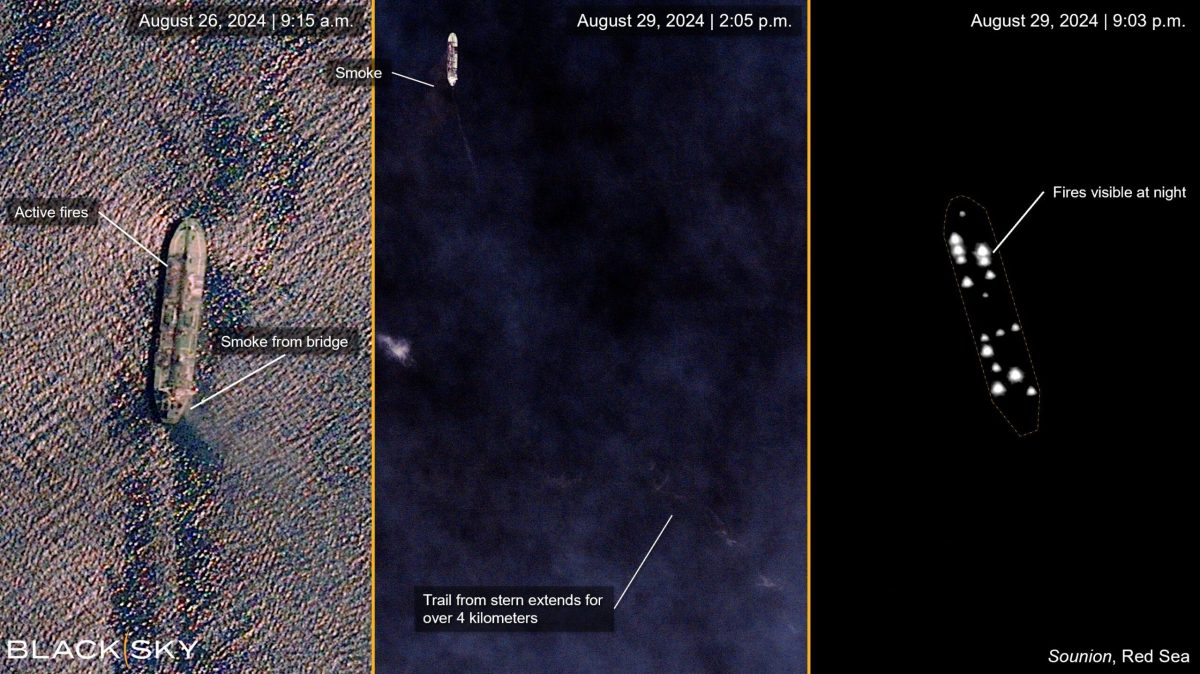WASHINGTON — The National Geospatial-Intelligence Agency and the U.S. Space Force are trying to figure out how they can work side-by-side to collect and distribute space-based intelligence to military users around the world. Military leaders are asking for speedier access to images from commercial satellites, which they say is vital in fast-changing situations.
Last week, Space Force second-in-command Gen. Michael Guetlein sat down with NGA’s Vice Adm. Frank Whitworth, who leads the country’s main satellite image analysis agency. Guetlein said Space Force operators have been assigned to a new “joint mission management center” located at NGA’s campus in Springfield, Virginia. This cell will aim to tackle tricky problems like processes for tasking imaging satellites and tracking moving targets from space.
The National Reconnaissance Office (NRO) and NGA, which control funding and access to imagery satellites and analytics services, have faced criticism from the House Armed Services Committee’s Strategic Forces subcommittee for inadequately supporting military combatant commands’ demand for tactical intelligence.
‘We’ve reached a Eureka moment’Speaking with reporters last week, Whitworth said the work at the joint mission management center is “going very well” but the division of labor issues are not going to get sorted out overnight.
“We’ve reached a Eureka moment in our understanding of the Space Force and their understanding of us,” Whitworth said.
He noted that the collaboration center at NGA will also play a crucial role in defining responsibilities for the future Ground Moving Target Indicator (GMTI) satellite constellation, a joint development effort between the NRO and Space Force. The goal is to ensure seamless and timely data flow from these satellites to military commanders and intelligence analysts.
Whitworth pushed back against criticism that NGA acts as a gatekeeper for military access to commercial satellite images, calling it a “myth.” He highlighted the Global Enhanced GEOINT Delivery (G-EGD) platform, which provides unclassified geospatial intelligence directly to government users, including the Department of Defense.
Meanwhile, the Space Force last year started a trial program called Tactical Surveillance, Reconnaissance and Tracking (Tac-SRT) to get better at delivering satellite images and analysis to military commanders quickly. The program has been touted for supporting relief efforts during the floods in Brazil in May and tracking wildfires in South America. Congress set aside $50 million to support Tac-SRT in this year’s budget.
Speaking last week at an industry conference, Guetlein said there are key issues to be ironed out with the intelligence community when it comes to space-based intelligence: “How are we going to share information in the future? How do we work together on things like getting computers to recognize targets automatically? And how do we get that information to the soldiers who need it fast?”
Whitworth described the joint mission management center as a first step. “You have to start somewhere,” he said, describing the new hub as a “sand pit” for discussing allocation and prioritization of resources.

Your blog is a beacon of light in the often murky waters of online content. Your thoughtful analysis and insightful commentary never fail to leave a lasting impression. Keep up the amazing work!